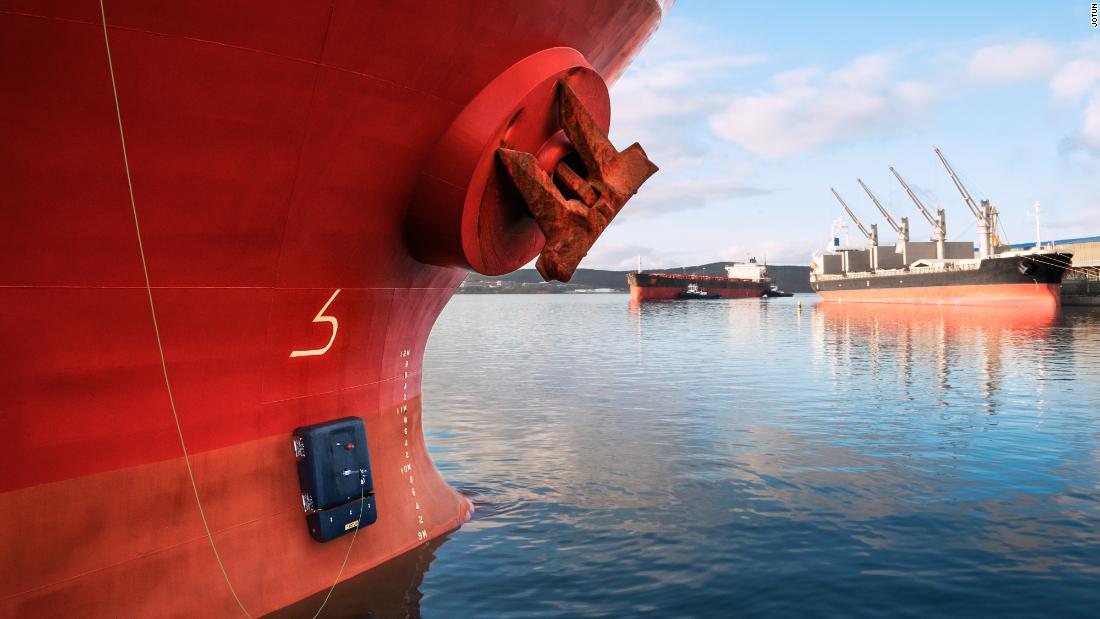
Biofouling increases the air resistance of ships, so more energy is needed to power them, increasing fuel costs and increasing their carbon emissions.
To combat biofouling, technologies such as special coatings on ships and cleaning led by teams of divers are commonplace. But the Norwegian Jotun has a different approach.

The HullSkater, shown here, is a robot that removes biofouling.
Jotun
Jotun has developed the HullSkater, a 200 kilogram (440 pound) magnetic crawler robot that removes the early stages of pollution. It is remotely controlled by operators in Norway, who use a 4G connection and the robot’s four high-definition cameras to inspect the surface, before using the brush to remove the first signs of build-up.
Ahead of biofouling
By cleaning biofouling at an early stage, “we get rid of it before it becomes a problem,” explains Geir Axel Oftedahl, director of business development at Jotun.
Depending on the size of the vessel, Oftedahl says the inspection and cleaning with the HullSkater takes about four hours and is done eight to 16 times a year. The robot is kept on board the ship and can be deployed when the ship is stationary and has a data connection, he added.

Biofouling is the build-up of marine life such as barnacles, mussels, algae and other organisms. Shown here is a “slime” on the hull of this ship.
GloFouling / IMO
Jotun has also developed a special coating that is painted on the ship to work with the HullSkater’s brush, Oftedahl says. This increases the effectiveness of the technology and reduces the risk of too much of the ship’s surface being eroded during cleaning, allowing chemicals to leak into the sea, he says.
Jotun says it is the first company to combine a robot, management and a coating to ensure the hull is always clean.
According to Geoffrey Swain, director of the Center for Corrosion and Biofouling Control at the Florida Institute of Technology, there are challenges in managing antifouling technologies as different movements and locations activate coatings in different ways. But he says robotics is “the best technology we have yet.”
Lower costs and emissions
“If you take a ship to Australia or New Zealand, you will be inspected, so it’s better to be proactive,” says Swain. “It ensures that shipowners, or even charterers, now come in and really focus on how they handle the coating of the hull.”

The HullSkater uses four high-definition cameras to inspect the surface and the brush to remove the first signs of build-up.
Jotun
The HullSkater, which took more than four years to develop, was designed to decarbonise the marine industry. Jotun claims that every $ 1 invested in its technology – including the coating, robot and offshore monitoring – will save more than $ 3 in fuel costs.
So far, the company is well on the way to bringing its invention to market: manufacturing and supplying 50 ships, Oftedahl says.
After unveiling the HullSkater at a virtual event in March, it signed its first commercial contract with Swiss-Italian container shipping company Mediterranean Shipping Company (MSC); later this year, the robot will be installed on one of MSC’s larger ships at the Chinese shipyard in Guangzhou.
“Clean hulls are only part of the puzzle when it comes to delivering a more sustainable shipping industry,” said Giuseppe Gargiulo, assistant manager at MSC. “But still a central piece.”